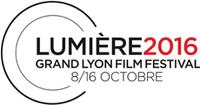Park Chan-wook
in 5 iconic scenes
PostED ON SEPTEMBER 08, 2016 AT APM
Difficult to retain only a handful of scenes of the filmography of Park Chan-wook; he is a master in the art of composing images with formal rigor, matched only by its brutality, be it explosive or contained, akin to a Quentin Tarantino. Yet, below, we present five of Park Cahn-wook's most striking scenes. Warning: spoiler alert!!
1. Sympathy for Mr. Vengeance (2002)
What is pain for some is pleasure to others. In the first part of his "trilogy of revenge," which tells of the desperate attempts of Ryu, deaf-mute, to cure his seriously ill younger sister, the South Korean Tarantino illustrates this Taoist adage with black humor, tragicomic at least. Four boys, ear pressed to a wall, are masturbating to the sound of female moaning. A tracking shot later, we find the sounds emanating from the dying sister, while Ryu nonchalantly enjoys a bowl of noodles. The art of the contrast...
2. Old Boy (2003)
The ultimate scene. In furious pursuit of a mysterious kidnapper who had him locked up for fifteen years, the so-called Oh Dae-su finds himself backed into a corridor by a large gang of henchmen, his only defense, a hammer. And thus begins a spectacular four-minute sequence, as Oh Dae-su, often overwhelmed but never giving up, cripples his opponents with all the brutality and skill of a Beat 'em up hero. A veritable ballet of cracking bones, the scene required no less than 17 takes over 3 days of shooting. The result is there, an emblematic signature of its author, visceral yet perfectly controlled.
3. Lady Vengeance (2005)
Between the harrowing and the grotesque, there is sometimes a fine line, which the denouement of Lady Vengeance crosses with rare assurance. Falsely accused of murdering a child, Lee Geum-ja finally gets his hands on the real culprit. The time has come to unleash his pent-up revenge. A cold, even chilling vengeance: after having shown parents videos of the torture inflicted on their young children, we get a shot-countershot as disturbing as it is appalling, Lee then invites them to punish the torturer themselves, held in a nearby room - with the latter very aware of the situation, thanks to a cable feed with a specific view like in Panic Room. What follows is a massacre scene no less ambivalent due its evocative and baroque nature, where the parents, waiting for their turn as patiently as a window at the post office, express the communicative catharsis of which Park Chan-wook has become the specialist.
4. Thirst (2009)
Park Chan-wook has a knack for taking special care with his films. So the final scene of Thirst features the romance between Kang-woo, a priest-turned-vampire after a mysterious blood transfusion, and Tae-Ju, the wife of one of his childhood friends. He wants to die with her, watching the sun come up. She refuses. And for a good five minutes, their disagreement looks like a somewhat sad cartoon, with Tae-ju using every imaginable strategy to escape death, even the most absurd (like hiding in the trunk!). But the inevitable occurs: at daybreak, in a lyrical and grimy embrace, the two lovers slowly burn, while the color of vengeance is reflected on the face of a third character, the blood red of a filmography ever more pictorial.
5. Stoker (2013)
Park Chan-wook is sometimes, wrongly, based on an occasional effusive flourish, regarded as a demonstrative director. A single scene from Stoker, his American escapade with Nicole Kidman, is enough to shoot down this belief. Loosely inspired by Shadow of a Doubt by his mentor-figure Alfred Hitchcock, the film takes the form of a scene behind closed doors between a teenager, India and her uncle Charlie, returning like out of thin air, after the death of his brother (her father). In one of the most finely, meticulously-crafted scenes of the film, India is practicing the piano. Charlie suddenly joins her, and without a word, challenges her to follow. An improvised a duet gradually slips from rivalry toward a game of seduction. Consistent with this mixed voltage of tension and relaxation, the montage melds into one with the music of Philip Glass, whose every note seems to suffuse a subtext.

